Overview of the James Webb space telescope
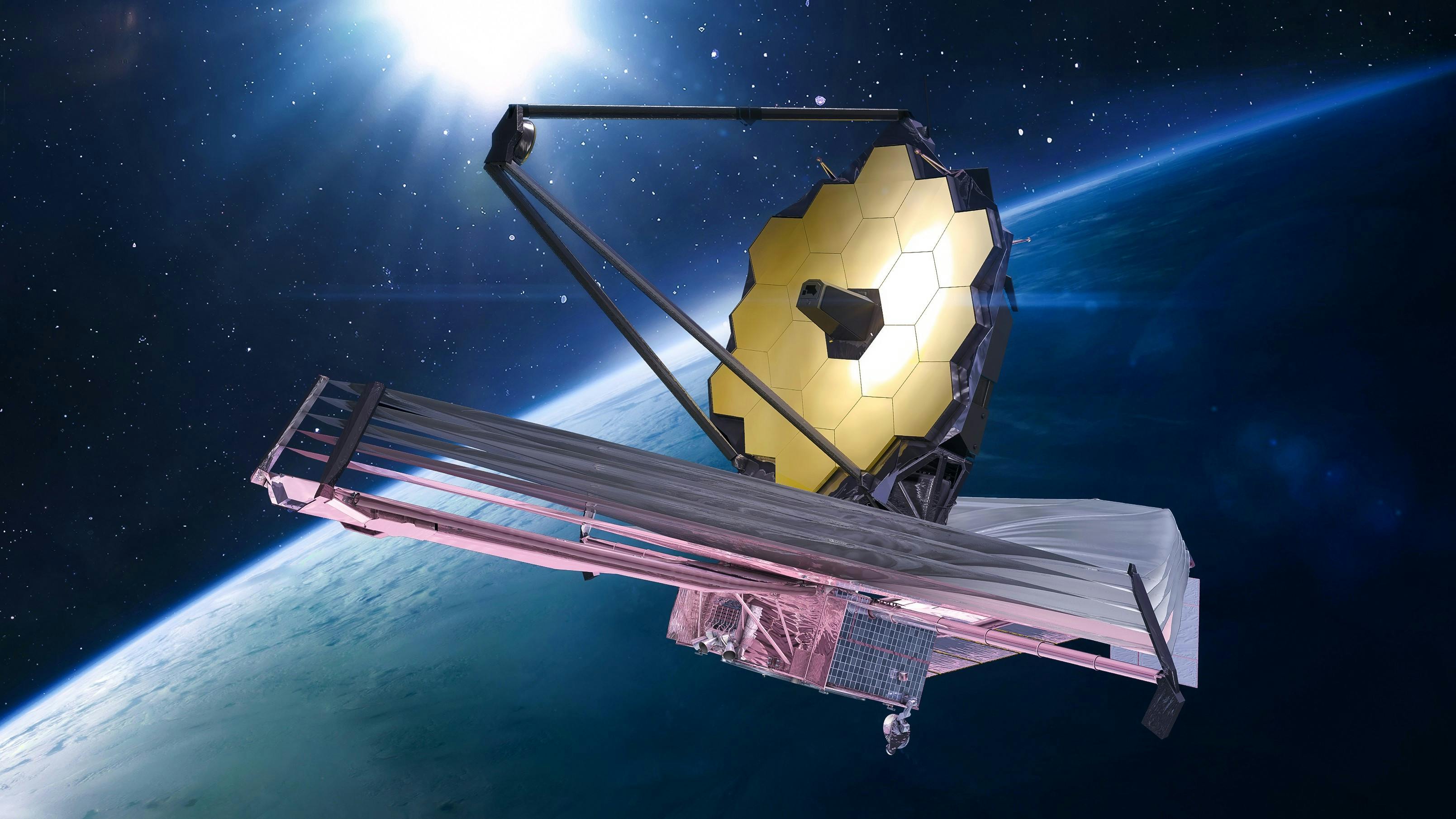
Blog
Since the earliest days of mankind, we have been fascinated by the stars, sun, moon, and planets. As technology progressed and we were able to build telescopes to “bring the stars closer,” we learned things about our solar system and galaxy that were absolutely mindblowing at the time. Like, say, the fact that there even are such things as solar systems and galaxies. While Earth-based telescopes have taught us a lot, they are severely limited by environmental conditions such as weather, smog, swarms of satellites, the earth’s rotation, and the atmosphere itself, not to mention electric light pollution and the sunlight reflected off the earth’s surface (called “earthshine”), any of which can make seeing into the deepest reaches of space impossible.
For this reason, some smart, sciencey-type astronomers and aerospace folks came up with Orbiting Astronomical Observatories, such as Copernicus in 1972, or space telescopes, like the groundbreaking Hubble, launched in 1990 and reaching full operational capability in 1993–among many others, including the latest, greatest, and coolest (really!), the James Webb Space Telescope (JWST). Through collecting and observing visible-light images of space, as well as gamma rays, X-rays, ultraviolet (UV) light, and infrared (IR) waves, scientists have been able to learn more than ever before about how the universe works, how it may have begun, and whether “exoplanets,” or planets that are part of our galaxy but out of our solar system, may be habitable. (Nifty fact: Over 5,000 exoplanets have been confirmed so far!)
Let’s go over what makes the James Webb telescope so incredibly awesome, where it’s located, how it works, and why it looks like a big, shiny space kite.
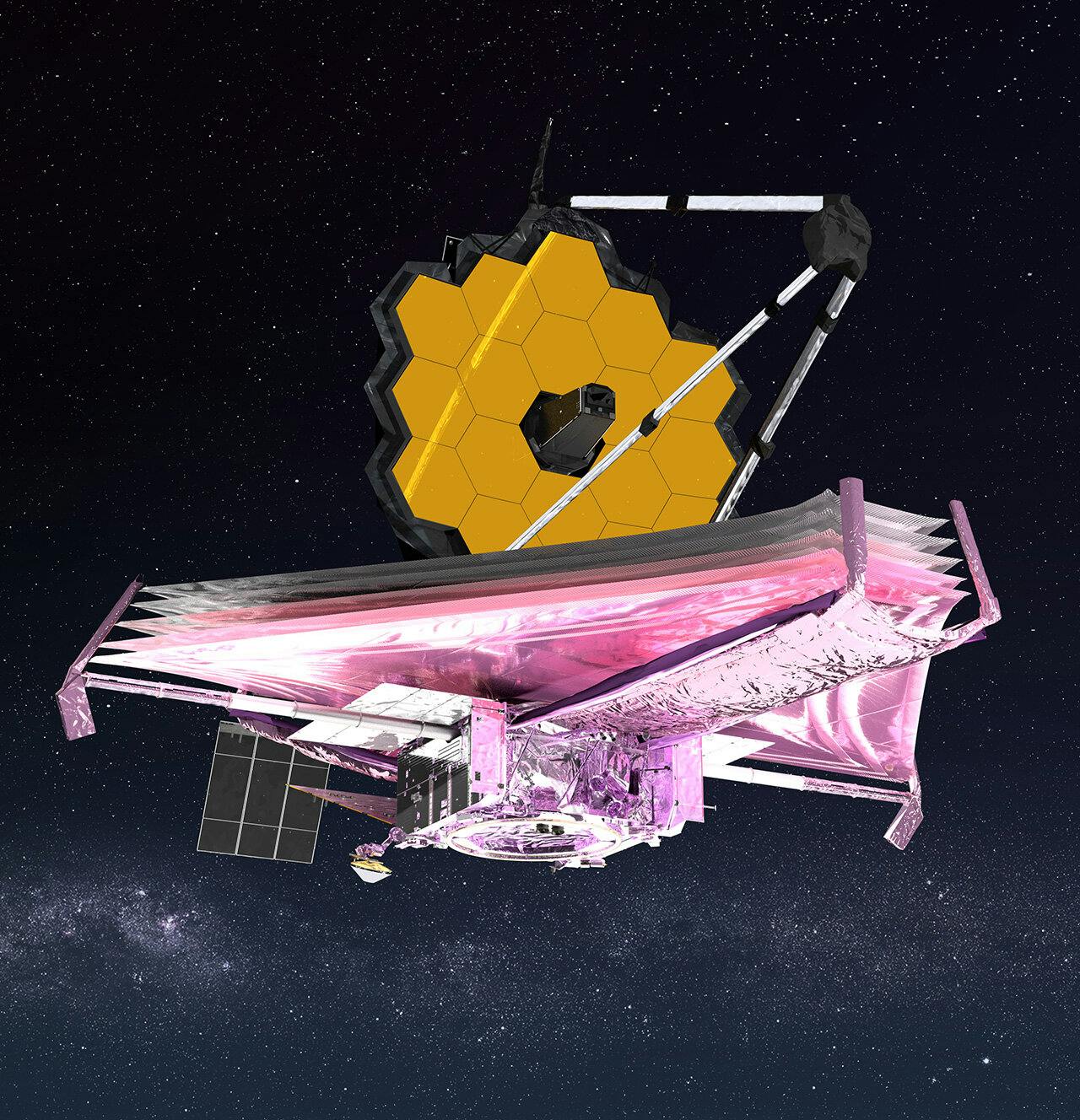
What is the James Webb space telescope?
When we’re talking about the JWST and we say “space telescope,” we mean both that it’s a telescope that allows the detailed observation of deep space, and that it is actually located in space. Plus, unlike previous space telescopes like the Hubble, it actually looks like a spaceship. Sort of a space telescope³, if you will.
Initial brainstorming and concepts for Hubble’s successor began around 1989 and proposed a near-IR telescope in high Earth orbit, or even an installation on the dark side of the moon, but as capabilities and technologies improved, it was determined that we could do something much more ambitious. The final design for the James Webb (named for the NASA administrator who led the Apollo program) called for a fully IR-capable segmented-lens space telescope that would be sent one million miles into space, into an Earth-synchronized, gravitationally stable orbit around the sun where it could be consistently shielded from the sun’s heat and light, and where it could maintain a consistently cold enough temperature for its IR-sensitive mirror and instruments to reach deeper into space than anyone ever has before.
The JWST was constructed between 2004 and 2019, at a cost of over $10 billion USD, more than 10 times NASA’s original cost estimate. The telescope launched on Christmas Day (December 25), 2021, on an ArianeSpace Ariane 5 Launch Vehicle. It traveled for 30 days to its “parking space” in orbit around the sun (more on that below), and so far has sent back some breathtaking images, including a dying star, the formation of a new star, a cluster of five galaxies, and the deepest infrared image of the universe to ever exist.
Here’s a good video of the JWST’s sunshade and mirror deployment sequence. Among other fascinating uses, the James Webb telescope will be used to observe exoplanets, generating data that will be used to characterize atmospheric composition and planetary conditions.
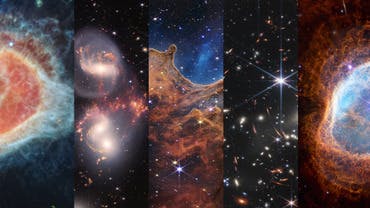
Where is the James Webb space telescope now?
The JWST is currently orbiting the sun, around a million miles away (1.5 million kilometers) farther away from the sun than the earth is, rather than orbiting in low-Earth orbit (LEO) like Hubble does. Webb is stationed at a location in space called the second Lagrange point or L2. At this position, from JWST’s point of view, the sun and Earth are always in the same part of the sky, allowing the telescope and instruments to be effectively shielded from their radiant heat and light. Here’s an animation that helps us visualize the James Webb telescope’s orbit at L2.
Why is it important for the James Webb telescope to be shielded from heat and light?
At Intergalactic, we’re all about managing heat, and interestingly, heat management is crucial to the mission and function of the JWST. One of the reasons the Hubble features a “tubular” design was that the outer cowling helps shield its mirror from light and heat. However, due to its proximity in LEO to enable servicing missions, most astronomical targets are occluded by the earth for nearly half of each orbit of the Hubble. Furthermore, the brightness of scattered earthshine can be elevated for long periods of the useful observation cycle. Hubble has proven remarkable, but it has serious limitations due to its design, and mostly due to its proximity to the earth.
Also, while the Hubble was designed to capture wavelengths of light spanning from ultraviolet, through the visible spectrum, to near-infrared, the James Webb telescope is designed to capture the visible to mid-infrared band. There is a small amount of overlap between the wavelengths each telescope specializes in viewing, but the JWST is capable of gathering infrared light much further along the spectrum. This means that it must be kept extremely cold, as we’ll see below.
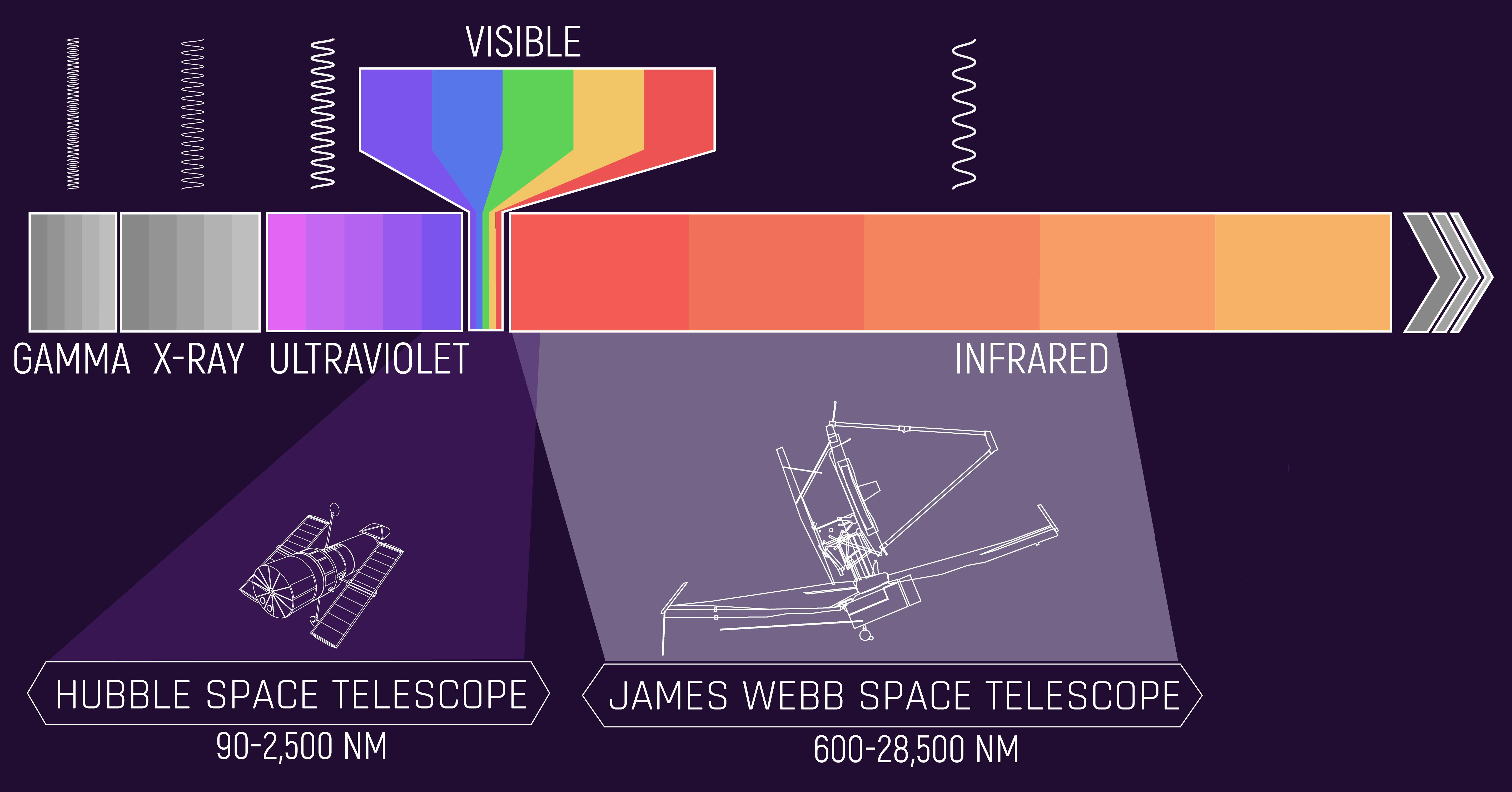
The James Webb space telescope is an entirely different approach from Hubble’s LEO strategy, and was never intended for “user serviceability” once launched into space. Its million-mile-away distance solves a couple of key problems: First, at L2, the earth and sun will always be in the same position relative to Webb, unlike Hubble’s LEO cycles (in which Hubble may actually be positioned along its orbit over time in a way that is not accurately predictable, due to density changes in the upper atmosphere–which means Hubble’s predicted position for six weeks’ time could be wrong by up to 2,500 miles/4,000 kilometers). So, at L2, the JWST doesn’t have to concern itself with reflected earthshine or any of these atmospheric anomalies.
Secondly, and most importantly, at L2 the James Webb can be kept extremely cold, with minimal variations in temperature. This is absolutely vital to its IR-sensitive reflecting mirrors and instruments, which detect truly nanoscopic variations in heat when searching the farthest, oldest netherregions of the universe. To stabilize the temperature of the reflecting mirrors, instruments, and “deck” of the spacecraft, the JWST uses a five-layer, deployable sunshade (which looks like some funky alien space-kite), unlike some earlier infrared observatories that relied solely on a supply of liquid helium to maintain low enough temperatures.
The ultra-thin layers that make up the sunshade are constructed of Kapton, a polyimide film developed by DuPont in the late 1960s, which has incredible heat-resistance and remains stable across a wide range of temperatures from minus 269 to plus 400 Celsius (minus 452 to plus 752 degrees Fahrenheit). The Kapton material is coated with aluminum and doped silicon to help reflect the sun’s rays and heat back into space.
When we say “ultra-thin,” we mean even thinner than Oreo Thins. The first layer of the sunshield faces the sun and is only 0.05 millimeters (0.002 inches) thick, while the other four layers measure 0.025 mm (0.001 inches) each. The thickness of the aluminum and doped-silicon coatings are correspondingly microscopic, with the silicon coating measuring ~50 nanometers (1.9 microinches) thick, and the aluminum coating at ~100 nanometers (3.93 microinches). Since the sunshade is deployed in the vacuum of space, the layers don’t have to be designed to withstand any air resistance, though the seams and material have rip-stop technology to help limit damage from micro-meteors or other space debris.
The multi-layered sunshield separates the observatory into a warm, sun-facing side, and a cold side. Thermal models show the max temperature of the outermost, sun-facing layer is approximately 230 degrees F (110 C), and the coldest layer has a projected minimum temperature of around -394 F (-236 C). The gaps between the layers act as additional insulators to shed heat in the vacuum of space. The JWST’s telescope and instruments operate optimally at under -370 F (-223 C). Pretty dang cool, huh?
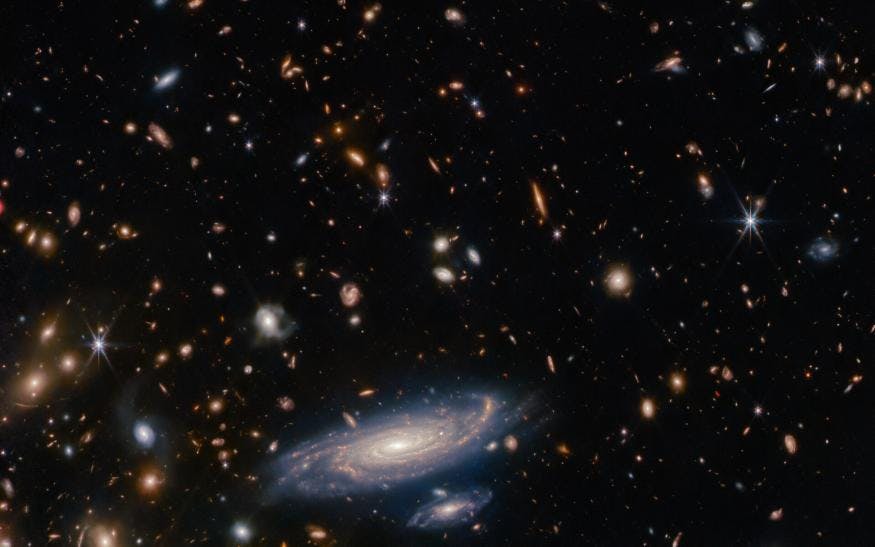
How big is the James Webb space telescope and its mirror?
If we compare the JWST to the more familiar size and shape of the Hubble, it may help provide a point of reference. Hubble is 43.5 feet (13.2 meters) long and 14 feet (4.2 meters) wide at the back, where the scientific instruments are housed. It weighs about 27,000 pounds (12,246 kg), or approximately the size and weight of a school bus.
The James Webb space telescope is much lighter than the Hubble, with a launch mass of 14,300 lbs/6,500 kg, but also much larger. The dimensions of the JWST sunshield are approximately 72 feet (22 meters) by 39 feet (12 meters), and it has been described as “the size of a large truck” or “half the size of a 737 airliner.”
The James Webb’s segmented, gold-coated beryllium primary mirror is also significantly larger than the Hubble’s aluminum and magnesium-fluoride-coated glass lens, for an important reason. NASA explains, “Webb’s 21.3-foot (6.5-meter) primary mirror is… significantly larger than Hubble’s 7.9-foot (2.4-meter) primary mirror, giving Webb more than six times the light collecting area that Hubble has. This is important at the longer and dimmer wavelengths of light Webb sees. Because the universe is expanding, light from distant objects is stretched as it travels to Earth. Shorter, bluer wavelengths of light get stretched toward longer, redder wavelengths. Distant objects that are bright in ultraviolet or blue light will appear redder, or redshifted, when their light reaches Earth. They are also significantly dimmer. Webb’s larger primary mirror will gather more of this redshifted and dim light, providing us with views of objects up to 100 times fainter than Hubble can see. Despite its larger size, Webb will deliver about the same resolution in near-infrared light as Hubble attains in visible light. A telescope’s resolution, the amount of discernable detail, is proportional to mirror size, and inversely proportional to the wavelength of the light observed. For Webb to resolve the same level of detail at longer wavelength infrared light that Hubble achieves at visible wavelengths, its mirror needs to be proportionally wider.”
Webb’s heat-sensitive mirror is plated with a layer of gold a couple of hundred atoms thick, because gold is very chemically stable and responds well to variations in temperature. Gold also reflects infrared light extremely efficiently, meaning that the JWST can detect tiny variations in IR waves at mind-boggling distances.
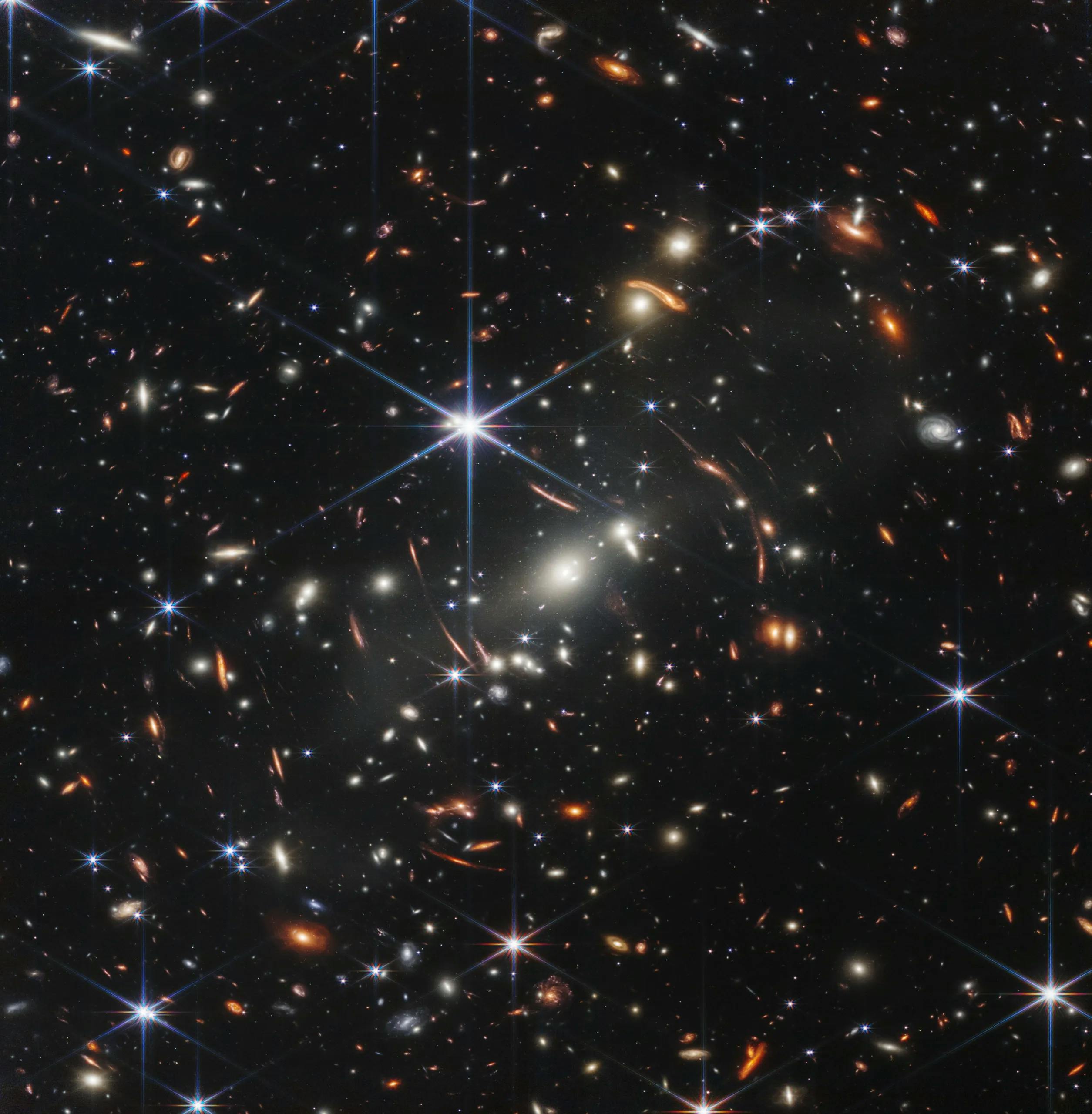
What type of telescope is the James Webb?
Both the JWST and Hubble are reflector-type telescopes. The basic concept is that a primary mirror reflects light onto a smaller, secondary mirror suspended above (or in front of, depending on your preferred orientation) the primary. The secondary, in turn, reflects the light back through a hole in the primary to the instruments. This type of design increases the focal length (the length of the path that incoming light takes to come into focus) while utilizing a relatively compact package by “folding” the light path back and forth. The longer the focal length relative to the diameter of the main or primary mirror, the higher the magnification and depth of field. However, while Hubble is a 2-mirror Ritchey-Chrétien Cassegrain design, the James Webb is a Three-Mirror Anastigmat design which incorporates a third, or tertiary, curved mirror to achieve better optical performance over a wider field.
Furthermore, as noted above, Hubble and James Webb have different purposes and specialize in different ranges of the electromagnetic spectrum. NASA says “Hubble’s visible and ultraviolet vision will complement Webb’s infrared views. This powerful duo will provide us with staggering cosmic vistas, the likes of which we have only imagined.”
If the initial images from James Webb are any indication, it’s already living up to the hype, and we look forward to more staggering cosmic vistas and mindblowing breakthroughs of understanding in the future.
–By Jeff Davis, Intergalactic Scribe
Sources:
https://webbtelescope.org/webb-science/the-observatory/mission-timeline
https://www.nasa.gov/mission_pages/hubble/spacecraft/index.html
https://en.wikipedia.org/wiki/Hubble_Space_Telescope
https://www.nasa.gov/content/goddard/hubble-vs-webb-on-the-shoulders-of-a-giant
https://webb.nasa.gov/content/observatory/sunshield.html
https://www.youtube.com/watch?v=-EnlaXnFcGs